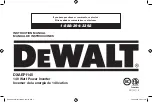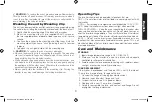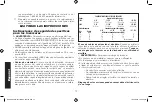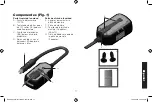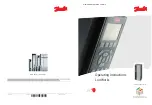
English
7
E
F
G
H
How This Inverter Works
This inverter is an electronic device that converts low voltage DC (direct
current) electricity from a battery to 120 volts AC (alternating current)
household power. It converts power in two stages. The first stage is
a DC-to-DC conversion process that raises the low voltage DC at the
inverter input to 145 volts DC. The second stage is a MOSFET bridge
stage that converts the high voltage DC into 120 volts, 60 Hz AC.
Power Inverter Output Waveform
The AC output waveform of this inverter is known as a modified sine
wave. It is a stepped waveform that has characteristics similar to the
sine wave shape of utility power. This type of waveform is suitable for
most AC loads, including linear and switching power supplies used in
electronic equipment, transformers, and small motors.
Protective Features
The inverter monitors the following conditions:
Input Voltage Too Low:
This condition is not harmful to the inverter,
but could damage the power source, so the inverter will automatically
shut down when input voltage drops below 10.5 ± 0.5 volts DC.
Input Voltage Too High:
The inverter will automatically shut down
when DC input voltage exceeds 16 ± 0.5 volts, as this can harm the
unit.
Thermal Shutdown Protection:
The inverter will automatically shut
down when the unit becomes overheated.
Overload/Short Circuit Protection:
The inverter will automatically
shut down when an overload or short circuit occurs.
IMPORTANT NOTE:
The Power/Fault LED Indicator will light red to
indicate an input voltage too low, input voltage too high or thermal fault
condition OR flash red and blue to indicate an overload or short circuit
fault condition before automatic shutdown occurs.
DXAEPI140_ManualENSP_100716.indd 7
10/19/2016 3:59:37 PM

